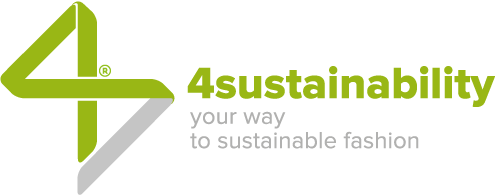Chance are the expression chemical management will sound very technical and not very interesting to the average consumer who enters the store to buy an item of clothing, a pair of shoes or an accessory. I have to buy a shirt for the gym, a sweater, a belt … What does chemistry have to do with it? It has everything to do with it! Every dress I wear, indeed, has been produced with a large use of chemicals, not all of which are exactly harmless or sustainable.
Knowing how to protect yourself
When the production cost is very low, in any case there is someone who pays and this “someone” is people and / or the environment. In other terms, it is not said that the fashion items we like so much, whether branded or not, are risk-free, meaning produced without the use of potentially harmful chemicals. It’s all the fault of an ever faster fashion, of collections that chase each other to maximize sales and profits. The moral is if I want to make a conscious purchase, I must first inform myself, knowing that, a priori, neither the brand nor the Made in Italy label can completely preserve me from risks.
Let’s start by saying that it’s very likely that chemistry is used to obtain the color fastness to washing, a water-repellent performance or an anti-stain treatment. Have we ever wondered what the effects of these processes are on the environment? How much impact do the factories’ discharges in the sea where we fish or in the rivers from which we draw water to irrigate and what damage do we suffer to our health through the foods we eat and the clothes we wear?
The role of brands, from great accused to active players of change
Greenpeace‘s attacks on the major fashion brands that years ago began to stir the conscience on issues such as the indiscriminate exploitation of resources, the use of child labor, violations of workers’ rights … have brought to light very serious responsibilities and abuses that can be charged, if not directly to the brands known to the general public, to their supply chains, on which at best a facade monitoring was exercised because that was convenient for it to be.
Since the Rhana Plaza tragedy in 2013 – the worst accident ever to hit the textile sector, with over a thousand workers killed in the collapse of the run-down Dhaka plant in Bangladesh – many things have fortunately changed. The conscious cynicism of which many production companies have make them guilty is slowly giving way to sustainability and social responsibility policies many suppliers are also involved in. The idea behind the change is that we must work together to achieve gradual but rigorous objectives that should be binding for everyone. Among these is good chemistry, which consists in the elimination of chemicals that are dangerous to health and the environment from the various production cycles of the fashion industry. It is about those same substances that have been heavily used in the last fifty years due their cheapness and high performance.
On this front, the largest global initiative born in response to the accusations of Greenpeace and other NGOs is Zero Discharge of Hazardous Chemicals – ZDHC, a working table that later became a foundation that brings together the leading international fashion & luxury brands, the most advanced realities in the supply chain, chemical producers, analysis laboratories, research institutes, associations and companies such as Process Factory specialized in supporting businesses in their conversion roadmap to good chemistry and, more generally, to sustainability as a development strategy.
The Made in Italy “warranty”
It is also necessary to shed light on the wording Made in Italy and the tendency to attribute to it an extended meaning of guarantee that it has not necessarily. Let’s say the t-shirt or sweater in our example were actually designed and sewn in Italy. This will be sufficient to write Made in Italy on the label, without obligation for the manufacturer to specify that the raw material, washing, dyeing, etc. were performed on the other side of the world.
Now, if there’re no legal obligations, if there’s no third party that controls, if laws are few and fragmented and each country behaves as it sees fit, I as a consumer will have very little means to make an informed purchasing decision.
I can rely on common sense, of course. And common sense should prompt me a few questions at least. I should ask myself, for example, how is it possible that in the various steps that go from the row material selection to the distribution of the finished garment in stores – by passing through the yarn production and fabric transformation – everyone gains a little and that, at the same time, workers are paid fairly, the factory kept safe, water and energy consumption reduced and the use of toxic or harmful chemicals avoided. There is something wrong, evidently. What is my contribution to the system if I close my eyes, if I just adapt without asking myself what’s the story behind a product and what damage could I receive?
To each his own role
The matter is broad even if we want to limit ourselves only to chemical management, that is to say chemistry used to produce what we wear. Certainly, everyone is called to do their part: the legislator who must pass more advanced and rigorous laws, governments that must apply them, supervisory bodies that must ensure compliance, judiciary that must rigorously sanction any violations and the consumer who must demand to be informed.
Brands and supply chain must work together to eliminate toxic and harmful chemicals to health and the environment from production cycles, possibly relying on recognized protocols such as the 4sustainability® brand aligned with the ZDHC approach. This is an ethical choice on a voluntary basis, of course, but also a business strategy.
In addition to the due respect for current regulations and the more stringent ones to come, there is a growing market share that carries out virtuous processes and sustainable alternatives, committing itself even before Covid-19 intervened to emphasize the system crisis and the need for accelerate towards a direction that is now obligatory: responsible production.
“The protagonist are the consumers, who despite being still little informed on these issues and often lacking tools to understand more, demonstrate a growing sensitivity and the willingness to learn in order to behave responsibly”, says Francesca Rulli, Founder and CEO of Process Factory/4sustainability®. “This means ‘rewarding’ brands that show they really want to clean up their production processes, bringing products with clear, reliable and understandable labels to the store – physical or virtual – and preparing the staff to respond and inform the consumer about the sustainability attributes of the garments, starting with the transparency of the production chain: how were they produced and where, through which steps?”
Tips for shopping
While waiting for all the mosaic tiles to go into their place, let’s give some useful information for an informed purchase even if there is not a well-made label. The first thing to know – we said – is that some substances dangerous for our health are commonly used in the clothes production. Phthalates, for example, are used to give flexibility and softness to rubberised prints: in contact with our skin, they can in the long run alter the body’s hormonal balance.
A huge chapter is that of dyes, which can contain carcinogenic substances such as aromatic amines. Known carcinogens are chlorine – used to “bind” many dyes – and chromium, which is to fix the color on the fabric. Formaldehyde is an irritating gas for the eyes and respiratory tract used to fix pigments in the printing phase, as well as a preservative in the packaging phase. Nickel is also highly allergenic: beware of jeans and dark or very colored garments because it is likely that they contain significant quantities of it.
Obviously, this is not the place to deal with such a broad topic. The point is that prolonged contact with these substances can cause multiple problems, from “trivial” allergic reactions to hormonal imbalances, to cancers of varying seriousness. Moreover, by washing garments these substances partly end up in the water and therefore in the environment, with the imaginable consequences in terms of pollution and the possibility of coming into contact with them again through the food we eat.
“I believe this is enough to make the expression ‘chemical management’ a little less distant from our daily life and a little more interesting, right? It is something – Rulli underlines – that companies and those like us who work with them must certainly deal with to improve production processes in a sustainable perspective, but that every single individual should care about and reward with his/her purchasing behavior. And this not to enrich one brand rather than another, but because our health and that of the planet and the future of our children are at stake”.

